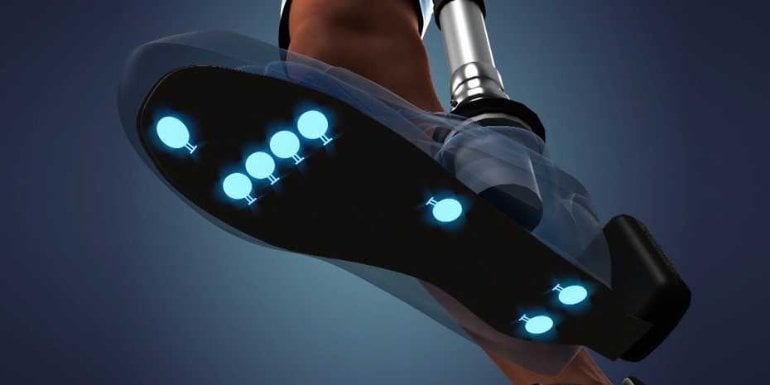Summary: Sensory signals transmitted from a prosthetic leg to the nervous system helps amputees perceive their prosthetic limb as part of their body. The new neurofeedback helps them perceive the new limb as significantly lighter.
Source: ETH Zurich
Leg amputees are often not satisfied with their prosthesis, even though the sophisticated prostheses are becoming available. One important reason for this is that they perceive the weight of the prosthesis as too high, despite the fact that prosthetic legs are usually less than half the weight of a natural limb.
Researchers led by Stanisa Raspopovic, a professor at the Department of Health Sciences and Technology, have now been able to show that connecting the prostheses to the nervous system helps amputees to perceive the prosthesis weight as lower, which is beneficial for their acceptance.
Together with an international consortium, Raspopovic has developed in recent years prostheses that provide feedback to the wearer’s nervous system. This is done via electrodes implanted in the thigh, which are connected to the leg nerves present there. Information from tactile sensors under the sole of the prosthetic foot and from angle sensors in the electronic prosthetic knee joint are converted into pulses of current and passed in to the nerves.
“To trick an above-knee amputee’s brain into the belief that the prosthetic leg was similar to his own leg, we artificially restored the lost sensory feedback,” says ETH professor Raspopovic. In a study published last year, he and his team showed that wearers of such neurofeedback prostheses can move more safely and with less effort.
Beneficial involvement
In a further study, the scientists were now able to show that neurofeedback also reduces the perceived weight of the prosthesis. They published the results in the journal Current Biology.

In order to determine how heavy a transfemoral amputee perceives their prosthetic leg to be, they had a voluntary study participant complete gait exercises with either neurofeedback switched on or off. They weighed down the healthy foot with additional weights and asked the study participant to rate how heavy he felt the two legs were in relation to each other. Neurofeedback was found to reduce the perceived weight of the prosthesis by 23 percent, or almost 500 grams.
The scientists also confirmed a beneficial involvement of the brain by a motor-cognitive task, during which the volunteer had to spell backwards five-letter words while walking. The sensory feedback not only allowed him to have a faster gait but also to have a higher spelling accuracy.
“Neurofeedback not only enables faster and safer walking and positively influences weight perception,” says Raspopovic. “Our results also suggest that, quite fundamentally, it can take the experience of patients with an artificial device closer to that with a natural limb.”
About this neurotech research news
Source: ETH Zurich
Contact: Fabio Bergamin – ETH Zurich
Image: The image is credited to ETH Zurich
Original Research: Closed access.
“Lightening the Perceived Prosthesis Weight with Neural Embodiment Promoted by Sensory Feedback” by Stanisa Raspopovic et al. Current Biology
Abstract
Lightening the Perceived Prosthesis Weight with Neural Embodiment Promoted by Sensory Feedback
One of the main reasons why amputees report poor satisfaction with prostheses is their excessive weight perceived, despite the fact that they typically weigh less than half of the natural limb. Weight perception can be a subjective percept that is influenced by cognitive processes. Even though recent developments in prosthetics have shown that sensory feedback restoration positively influences cognitive aspects (as embodiment of the device and cognitive load), the potential benefits on prosthesis heaviness perception have never been investigated. In this study, we explored this matter using intraneural sensory feedback in a transfemoral (above-knee) amputee. We hypothesized that providing neural feedback would affect the integration of the prosthesis in the amputee’s body schema, hence influencing the prosthesis weight perception. The results indicate that, after performing an over-ground walking task, the sensory feedback allowed a 23% decrease in prosthesis heaviness perception compared to the no feedback condition. Our hypothesis was confirmed by a significant increase in the embodiment of the prosthesis (by 60.5%) and confidence (by 36%) while walking with the sensory feedback. A subsequent dual task (i.e., walking while spelling backward) showed that the sensory feedback abolished the reduction of walking speed and accuracy observed during the no-feedback condition and normally seen with increased mental workload, suggesting a cognitive integration of the system. These results show the importance of providing close-to-natural sensations from the missing limb to allow a good integration of the prostheses and increase the satisfaction of their users.






